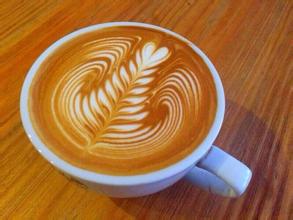The difference between Italian Coffee Grinder and other Coffee Grinder
Generally speaking, the parallel grinding disc has the advantages of fast rotational speed, fast grinding and more uniform grinding, while the disadvantage is easy to heat and relatively short life, while the tapered grinding disc has the advantages of not easy to heat and long life, and the disadvantage is slow and uneven.
At present, the Japanese Fuji ghost tooth grinding plate can grind more uniform coffee powder, at the same time produce less fine powder, and the grinding efficiency is higher. But it is not suitable for the extraction of espresso.
There are four main factors affecting extraction by bean grinder:
Evenness: coarser coffee particles are more likely to be underextracted, while finer particles are overextracted in advance, so the coffee powder with a larger span of grinding thickness can taste more turbid and irritating smells. When the coffee powder with the same size and similar shape is used for extraction, the taste becomes brighter and stronger, and the performance of flavor characteristics is clearer and consistent.
The amount of fine powder: coffee powder close to flour can easily be overextracted or even dissolved in water, thus affecting the extraction taste of coffee. The more fine powder, the more easily coffee is over-extracted, and the more bitter the taste is, the more mixed it is. When making espresso, the fine powder will first be washed out by the water and into the cup. If extracted properly, the thick oil will hold up the fine powder, and the fine powder will float on the surface of the oil, forming a beautiful "tiger spot". But "tiger spot" does not represent the taste of espresso. The production of fine powder can be reduced by choosing a better bean grinder or using a sieve. However, if there is no fine powder at all, the coffee brewed will also lack a sense of hierarchy, and the balance can only be put into practice, not in words.
Calorific value: the grinding plate of any bean grinder will generate heat in the grinding process, and the heating of coffee powder will accelerate the oxidation process and accelerate the volatilization of aroma, resulting in the weakening of coffee flavor after brewing. The calorific value of the cutter head depends on the size of the grinding plate, the material used, the structure of the knife, the fineness of grinding, the speed of the motor, the hardness and texture of coffee beans and many other factors. Therefore, at present, large brands of bean grinders begin to be equipped with heat dissipation windows, cooling fans, choose more heat-dissipating metal, or drive the cutter head with higher torque and low speed motor, so as to reduce heat generation.
Static electricity: generally speaking, the finer the grinding, the faster the grinding machine, the stronger the static electricity generated; the internal material is plastic, and the lower powder mouth does not use the bean grinder designed to reduce static electricity, so the static electricity generated is stronger; the coffee beans with rich oil and deep roasting are ground, the static electricity generated is stronger. When grinding the Italian bean mill, the fine powder often appears as a ball, which affects the density of the powder, resulting in uneven extraction, while the iron absorber at the outlet of the single bean mill absorbs silver skin and fine powder through electrostatic adsorption. to help reduce the taste and odor of excessive extraction.

Important Notice :
前街咖啡 FrontStreet Coffee has moved to new addredd:
FrontStreet Coffee Address: 315,Donghua East Road,GuangZhou
Tel:020 38364473
- Prev

Introduction to the steps of using the coffee powder crusher
The direction of pressing powder (which may be a little more complicated than we thought): vertically downward. If the pressure is inclined, the high-temperature and high-pressure hot water coming out of the boiling head will seek the infiltration of the layer with the least resistance, resulting in uneven extraction. At the same time, it is easy to have the channel effect that we often talk about. I need to explain this. I don't need much. However, with regard to the direction of pressing powder, it will indirectly involve another problem, that is, cloth powder.
- Next

The usage of Philharmonic pressure-what is the price of Philharmonic pressure suitable for which kind of coffee beans?
1. What kind of ground coffee powder should I use? We recommend fine grinding, but it is slightly thicker than the Italian machine. Why is 80 ℃ water recommended for brewing coffee? From coffee lovers to coffee professionals, all of our tasters like 80 ℃. Because this temperature can brew smooth and rich coffee, hotter water will increase the bitter and sour taste by 3. 5%. How can I put
Related
- What is the Philharmonic pressure? How to use Philharmonic pressure to make delicious coffee
- Why does a hand grinder have more fine powder than an electric grinder?
- In addition to the hot mom, what is the difference between the versions of EK43 | ditting and Mahdi ek43?
- What kind of equipment do you need to make coffee by hand? Introduction to novice starter cooking equipment tools
- Espresso needs to be ground how thick and thin scale entry Italian Coffee Machine Bean Grinder investigation and Grinding course
- How much does it cost to open a small private cafe? How much does it cost to learn coffee? How to operate it?
- The difference between the flavor characteristics of hand-brewed coffee and coffee maker is hand-brewed coffee really better than coffee maker? Can I use a coffee machine to make coffee beans by hand?
- The difference between 01 and 02 of hario v60 filter cup what is the difference between 01 and 02 filter cup opening and cooking flavor
- What's the difference between the smart cup and the French kettle? Which is better, the French kettle or the Smart Cup?
- What's the difference between a smart cup and a V60 filter cup? The difference between the taste of smart cup and hand-brewed coffee

